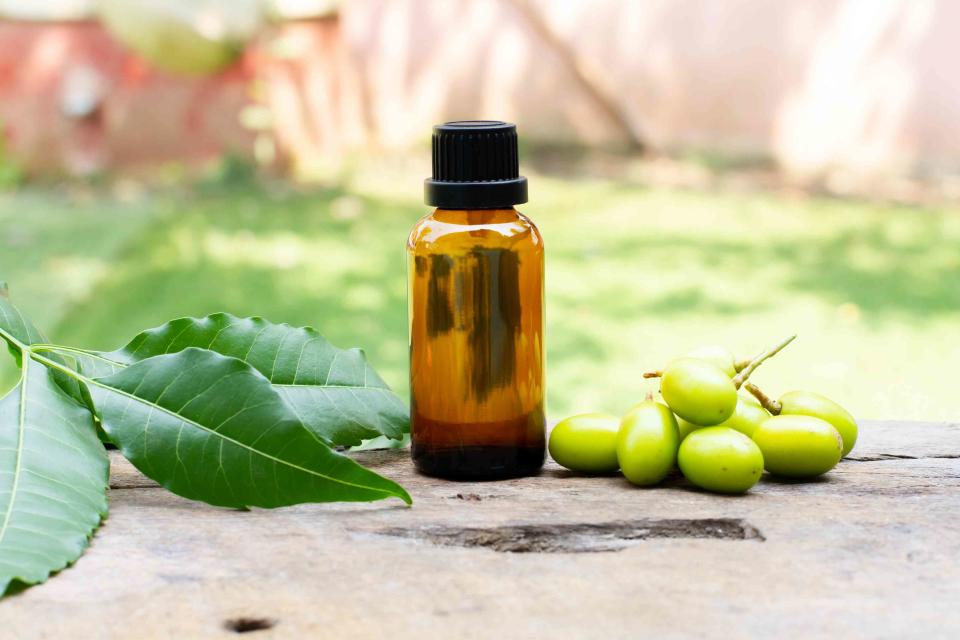How to Use Neem Oil, a Natural Way to Treat Plants for Pests and Diseases
This natural pesticide can be used for indoor and outdoor gardens.

Ninetechno / Getty Images
No matter how much work you put into them, pests and disease are two things many gardeners encounter when tending to their plants. If you're looking for a natural way to treat these common issues, try neem oil. Used to control fungal diseases and common insects, like mites, aphids, and whiteflies, neem oil is an organic treatment that will help keep your plants healthy.
Meet the Expert
Andrew Bunting, vice president of horticulture at the Pennsylvania Horticultural Society
Kelly Funk, president of Jackson & Perkins, a plant nursery and rose hybridizer
Related: How to Make Insecticidal Soap, a Natural Way to Remove Bugs From Your Houseplants
What Is Neem Oil?
Neem oil is a natural pesticide extracted from the neem tree (Azadirachta indica). It's used to control insects and fungal diseases in plants, says Andrew Bunting, vice president of horticulture at the Pennsylvania Horticultural Society. The natural plant remedy is also approved for organic gardening.
How Neem Oil Works
Neem oil contains compounds that disrupt the growth and development of pests by interfering with their feeding, reproduction, and molting processes, says Kelly Funk, president of Jackson & Perkins, a full-service nursery and rose hybridizer. Neem oil also has anti-fungal properties that help suppress fungal diseases by inhibiting the growth of fungal spores, she says.
When to Use Neem Oil
You can use neem oil on plants as an organic pesticide, fungicide, and insecticide. "It is typically applied when plants are experiencing pest or disease problems, such as aphids, whiteflies, spider mites, powdery mildew, or fungal infections," says Funk. "In general, it is recommended to apply neem oil every seven to 14 days for ongoing pest control or disease prevention, depending on the severity."
When Not to Use Neem Oil
While neem oil is an effective treatment for plant pests and diseases, there are some instances when you shouldn't use it. "Avoid applying neem oil during extreme temperatures, such as very hot or cold weather, as this may cause plant stress," says Funk.
There are also some sensitive plants that shouldn't be treated with neem oil, for example, you should never use it on young or dehydrated plants. Additionally, avoid using neem oil on peppers, beans, or peas, as well as on herbs, including basil, dill, cilantro, oregano, parsley, and thyme. "Also avoid leafy crops such as arugula, lettuce and spinach and avoid the cabbage family, including, broccoli, Brussels sprouts, and kale," says Bunting.
How to Use Neem Oil
The steps for applying neem oil may vary depending on the product you have, but generally this is how to use it:
Shake the neem oil bottle well before use.
Dilute the neem oil according to the instructions on the product label.
Fill a spray bottle with the diluted neem oil solution.
Test the solution on a small section of your plant to ensure it doesn't damage it.
Spray the neem oil solution evenly onto the foliage, stems, and underneath the leaves of the affected plants, ensuring thorough coverage.
Repeat the application as needed, following the recommended interval between treatments.
Tips for Applying Neem Oil
There are some things to keep in mind when applying neem oil to make it work effectively and protect your plants from damage.
Perform a test application on a small area of the plant and wait 24 hours to check for any adverse reactions before treating the entire plant, says Funk.
Avoid using neem oil on seedlings or young plants, as they may be more sensitive to the oil's effects, says Funk.
Apply neem oil in the evening to avoid potential leaf burn, says Bunting.
Follow the instructions on the product label and mix it with water according to the recommended ratio.
Spray neem oil on plant leaves and stems, focusing on areas where pests are present, says Funk.
Read the original article on Martha Stewart.

